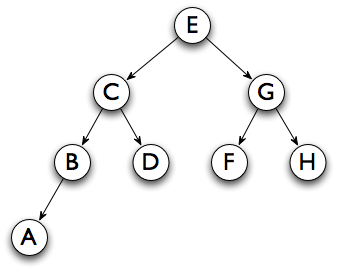(20 points) Weiss Exercise 5.26 [5.20]. In order to make the calculations simpler, you may assume that N = 2k - 1 for some integer k ≥ 0, and that all elements are equally likely to be the one we are searching for. Note that the problem only deals with successful searches (where the item we are looking for is actually in the array).
Hint: For each i, count how many of the array elements will be found after binary search examines exactly i array elements. (For example, the middle element is the only one to be found after examining one array element, and there are two elements that can be found after two probes into the array.) Use a summation to help you find the average.
Potentially useful fact: Depending on how you work this problem, you may find the following useful:

(15 points) Suppose we execute this pseudocode:
String in = "ABCD";
String out = "";
Stack stack = new empty stack;
while ( in != "" || stack is not empty)
randomly choose ONE of the following two operations:
- remove the first character from in and push it on stack, or
- pop stack and add the character that was popped to the end of out.
Note that this process will always result in some permutation of
ABCD
in the output. Recall the "railroad diagram" discussion from
the Session 10 PowerPoint Slides.
-
(5 points) Display two permutations of
ABCDthat are NOT possible final values ofout. -
(10 points) How many different permutations of
ABCDare possible final values forout?
(10 points) It is useful to have a unique representation of binary trees that can be written compactly. For simplicity, we assume that each node of the tree will contain one
Character. We represent a tree by a pair of strings, which I call
chars
and
children. The
chars
is a
pre-order
listing of the contents of the nodes. The
children
string tells about the
children
of the corresponding node from chars as follows:
| 2 | The node has two children. |
| 0 | The node has no children. |
| L | The node only has a left child. |
| R | The node only has a right child. |
For example:
chars = "+a*-bcd"; children = "2022000";
represents the tree in Weiss Figure 18.11 (a)
chars = "7215349"; children = "220LR00";
represents the tree in Weiss Figure 19.4 (a).
-
What are the values of
charsandchildrenfor the tree below?
-
For a different tree we have:
chars = "THEQUICKBROWN"; children = "2R220002R0RL0";
Show the order of the nodes in an in-order traversal of the tree.
(10 points)
THEQUICKLAZYFOX
is the pre-order traversal of a tree (one character per node).
QIUCEHLAZKFYTXO
is the in-order traversal of the same tree.
What is the order of the nodes in the level-order traversal of this tree?
(10 points) If
tree
is a
BinaryTree
with
N
nodes, and
itr
is a
PostOrder
iterator for that tree, suppose that we run the following code:
for (itr.first(); itr.isValid(); itr.advance()) {
System.out.println(itr.retrieve());
}
Is the running time for this code Θ(log N), Θ(N), Θ(N log N) or Θ(N2)?
Explain your answer.
Be sure that your explanation accounts for how the postorder iterator’s stack is used during the execution of the code. The code for the PostOrder class can be found in Section 18.4 (spanning three different pages).
Here is the problem statement from the book: Method changeList replaces each String in the list by both its lower-case and upper-case equivalents. Thus if the original list contains [Hello, NewYork], the modified list will contain [hello, HELLO, newyork, NEWYORK]. Use the ListIterator interface's add and remove methods to write an efficient implementation of this method for linked lists.
public static void changeList(List<String> theList) . Note that both ListIterator and LinkedList are defined in the java.util package.
- p(n0) is true.
- for any k≥n0, if p(k) is true, so is p(k+1). To show this part, we write down the assumption that p(h) is true, and use it to show that p(k+1) is true.
Notes:
- Don't just write equations. Also write some words to explain what you are doing.
- Some students have been erroneously taught that you do an induction proof of a property that involves an equation in the same style you would use to solve an equation: writing down the equation you want to prove, and then performing the same operation on both sides until you get a true statement. This is at best very bad style, and it can sometimes lead to "proving" something that is not really true. Instead, start with "one side" of the thing you want to prove, and algebraically manipulate it (including using the induction assumption at some point) until you get what you want on the other side.